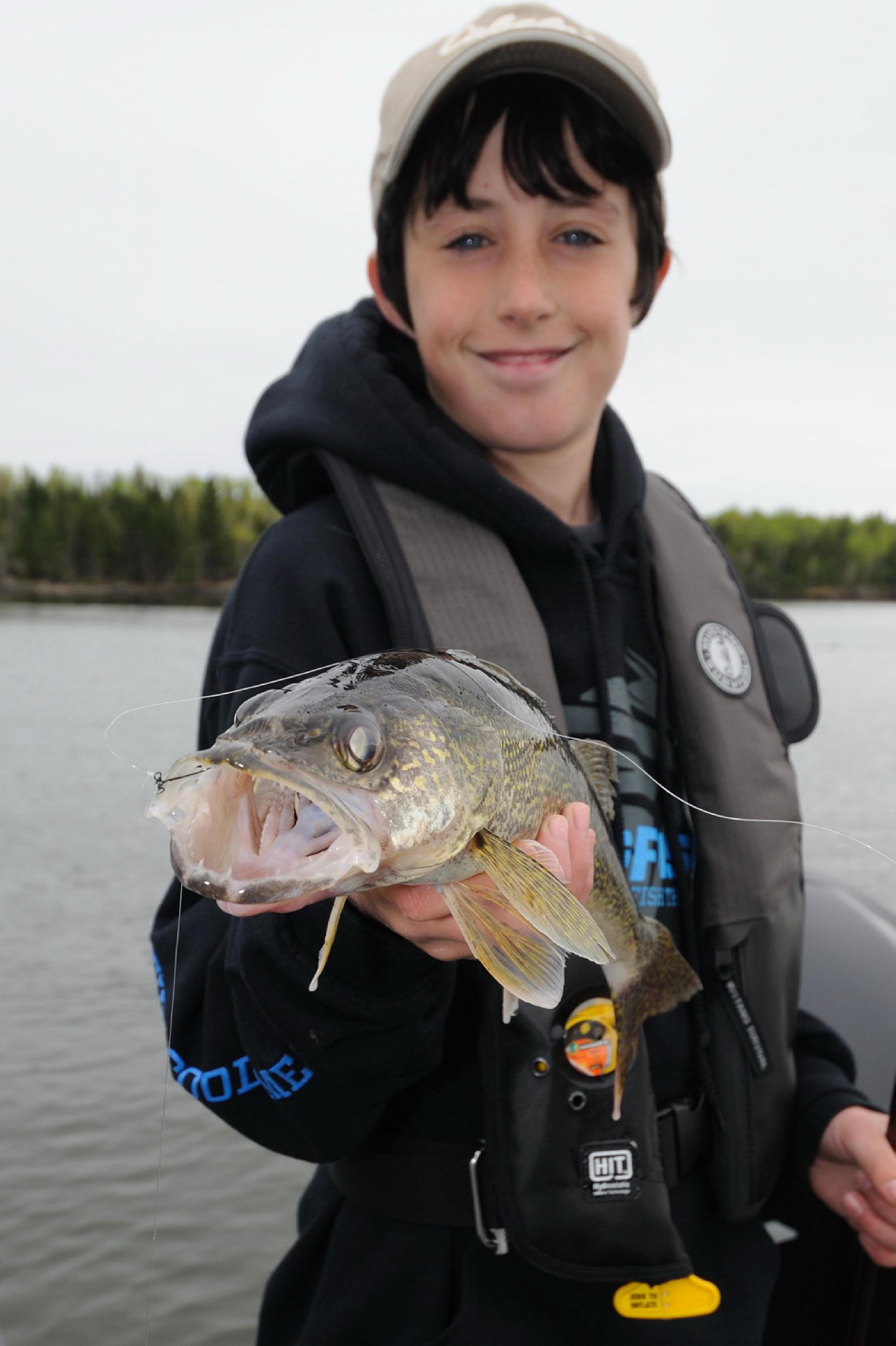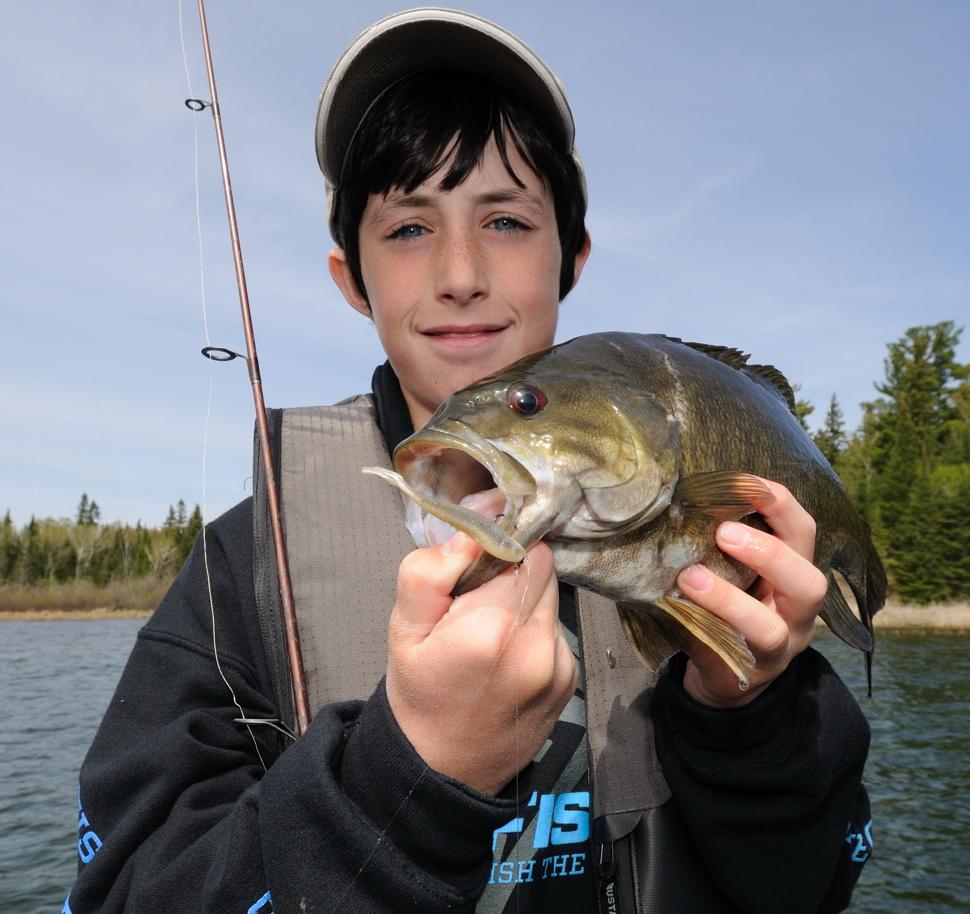what hook to use for drop sho rig for pan fishing
I love it when a reader writes in with a great question that, from a timing perspective at least, seems nigh too good to be truthful.
Have the following note from Steve in Ottawa, who recently asked:
"What is the best hook for drop-shotting? And if it'south one of the brusque-shank hooks, similar an Octopus, why? As well, what is a good size hook to employ for average size bass? Those #2s and #4s look kind of small to me. Is driblet-shotting also practiced for walleye and perch? Finally, I hear a lot about those spinning drop-shot hooks, but they're kind of pricey. Is line twist that big of a bargain? Can't I simply use a hinge?"
Well, no sooner did Steve's alphabetic character country on my desk, or rather on my reckoner screen, than the walleye flavour opened here in Northwestern Ontario. And estimate what I had rigged up on four of the rods my son-in-law, two young grandsons and I used? Of course, it was a drib-shot rig.
And were we successful drop-shotting on opening mean solar day?
Well, my seven- and 10-twelvemonth-old grandsons hauled three walleyes into the gunkhole before I had finished putting baits on all the hooks. They also landed 30 walleyes, a bonus 4-pound plus smallmouth bass and a muskie—where the heck did it come up from—in the kickoff lx-minutes of the season.

Information technology was incredible activity and yet, indicative of what we've come to expect when yous fish with a drop-shot rig. Then, with that in perspective, permit's look closer at Steve's questions.
Every bit a full general rule, the best drop-shot hooks are wide-gapped, super precipitous and made of light wire. Two of my favourites are the Gamakatsu Finesse Drop Shot Claw and VMC Drop Shot Hook. These, and similar Octopus-way hooks, piece of work well because they don't overpower the relatively small, finesse baits we typically use when nosotros're drop-shotting.
Plus, they require very little effort to set the claw well. Indeed, so long as you proceed the hook sharp, yous generally only demand to elevator upwards your rod tip smartly when you experience a bite and yous'll jab the point into the fish'due south mouth every bit easily as a nurse does with a needle when giving y'all your almanac flu shot.
You tin can also use lite offset worm hooks when yous're drop-shotting with thin, finesse worms Texas-rigged and even much heavier hooks when you lot're "Bubba-shotting" with baitcasting equipment in thick weeds for big largemouth. But, as a general rule, for smallmouth bass, walleye and perch the finesse manner drop shot hooks I've mentioned are the rule.
As for sizes, it is all-time to lucifer your hook to your bait. That means using hooks ranging between size 4 and 1/0. Having said that, yet, I have drop-shotted for perch and crappies using hooks as small equally #vi and #8. Again, simply friction match your hook size to your bait, remembering not to overpower it with a hook that is too big.
And make no mistake about it, Steve, those #2 and #4 size hooks are deadly. Every bit a matter of fact, in one case yous hook a fish with them, you lot can often lay downwardly your rod and eat lunch, and the fish volition non exist able to milkshake itself free. They're pasty sharp, like a splinter in your finger, and at that place is usually no escaping.
Now, before we leave the subject field of hooks, what about the Null-Twist and No-Spin drop-shot rigs sold by Stringease Tackle and VMC? Well, to be honest, they're ingenious for a couple of reasons and well worth using.
For starters, line twist tin can be an issue when y'all're drop shotting if you don't identify your soft plastic bait on perfectly straight, or you utilize a hooking method like "wacky rigging" that can crusade your allurement to spin and your line to twist when you reel in your allurement.

If yous use a gel-spun-type mainline like Nanofil, Fireline or Sufix Fuse and a short monofilament or fluorocarbon leader like I do, splicing them together using back-to-dorsum uni-knots, an Albright knot or a Bob Foran knot, line twist commonly isn't a major upshot, equally you can replace your leader at the end of the day, whereas your gel-spun mainline is generally twist-resistant.
Of grade, if you're using straight fluorocarbon or monofilament line you lot tin can splice a tiny quality above your drop-shot claw to avert whatever twist. Only make sure you don't tie it too high up and so as to interfere with casting or landing a fish.
On the other paw, the unique Zero-Twist and No-Spin rigs sidestep this trouble completely. The other reason these pre-assembled rigs are so cool—and they but price a cadet or then per hook—is that you tin use your favourite knot to necktie them to your line.
When yous fashion a driblet-shot rig from scratch, you have to necktie a special knot—the Palomar is my favourite—always starting from the hook betoken side. Then, once yous've fashioned the knot, you take to pass the tag cease of your line dorsum through the centre of the claw then that when you pull it tight, your hook "pops out" and is positioned perpendicular to your line.
You lot can avoid all of this rigging rigmarole when you use i of the cheap, pre-assembled drop-shot rigs. Plus, you inherently avert line twist and can use your favourite knot, which is really of import if you're using fluorocarbon line.
Finally, is drib-shotting a good tactic to utilize for walleye and perch? I'd have to say "no" it is not adept—information technology is typically phenomenal.
Source: https://www.outdoorcanada.ca/all-about-fishing-with-drop-shot-hooks/